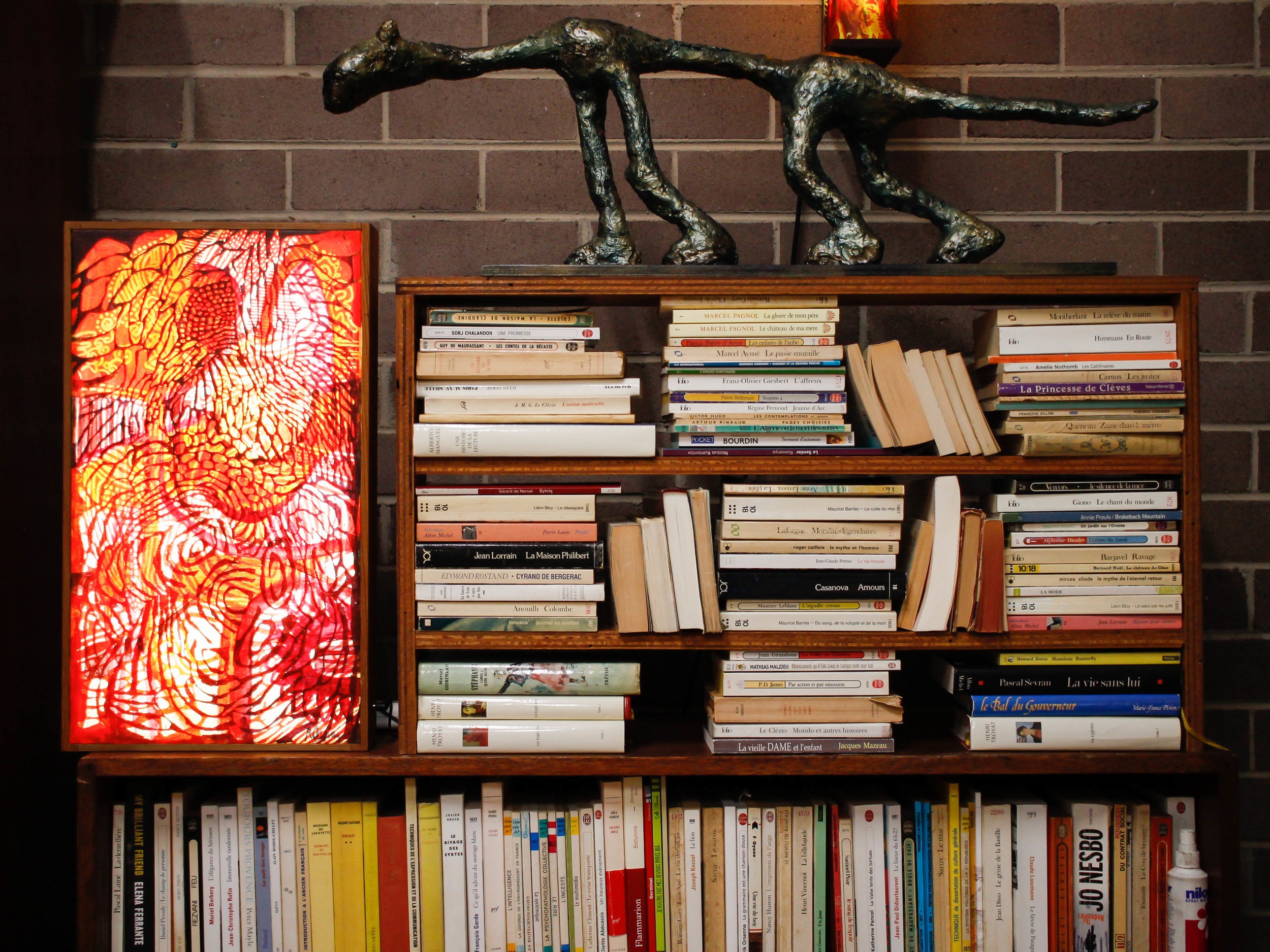Studio Visit with Rita Orsini
The Corner Store Gallery - studio visit with Rita Orsini
Meet Rita Orsini, another of our Sydney based artists exhibiting as part of our next exhibition Three Journeys. Rita is a painter, jeweller, maker and French teacher. She has the most fantastic space to paint, teach and display her wares to the public in a converted garage complete with her beloved French style barn door. With street frontage it’s the perfect home gallery with studio attached.
I caught up with Rita at her very arty home to find out more about her varied practice.
The Corner Store Gallery - studio visit with Rita Orsini
The Corner Store Gallery - studio visit with Rita Orsini
Tell us a little about your background. How long have you been making art?
I have always loved making and creating. I was born and raised in France where I completed my university degrees. In the 1990s, I came to Australia and started teaching French at the University of Sydney. At the same time I pursued my artistic interests and studied art and design at TAFE and through short courses in Sydney. I am passionate about contemporary design and applied arts, and I continue to explore new materials, learn new skills and enjoy pushing the boundaries of traditional techniques.
The Corner Store Gallery - studio visit with Rita Orsini
How do you choose your subject matter and mediums? What draws you to the subject and medium?
I am largely inspired by the environment around me, in Australia and in France, but what really fascinates me is the way light transforms colours and forms. That led me to explore the use of lighting through my paintings. And in 2009 I created my first illuminated canvas - the Orsini Light - which I have been making ever since. Later I applied the same approach to my Osso Buco resin work. The added dimension that appears when light shines through the Osso Buco pieces follows the theme of transformation, which is at the core of all my artworks.
The Corner Store Gallery - studio visit with Rita Orsini
Talk us through your process.
The Orsini Lights are cylindrical lamps or box lights. Every lamp is individually painted with acrylic on canvas. The canvas is then cut and rolled around a recycled plastic tube or framed in a specially designed and handmade wooden box, with low-energy and LED lights inside. The artwork has to be thought out and executed very carefully in order to leave gaps in the painting for the light to go through. It takes time and the result is often compared to stained-glass windows. People say that they love the way the painting glows and changes when the light is on, allowing other features and colours to appear. There is a sense of mystery and discovery at play.
The Osso Buco jewellery and bowls are made of resin. Mixing pigments into resin allows me to play with light, colours, movement and effects, in the same way as I do on a canvas.
The OMA jewellery is made of crocheted silver-plated copper wire and wood or painted canvases. Sometimes for a few rare items, I use upcycled silver wire from selected double bass gut strings.
The Corner Store Gallery - studio visit with Rita Orsini
The Corner Store Gallery - studio visit with Rita Orsini
Where do you find inspiration? Who or what are you influenced by?
I love the work of Maurice Estève, a French artist (1904-2001) who combined strong colours and forms. The way he played with transparency, continuous and interrupted lines, shapes and textures really inspire me. I am also drawn to fauvist artists, such as Matisse, Raoul Dufy, André Derain, for their wild brush strokes and strident colours, their capacity of simplification and abstraction. On the other hand, I also love the intricacy of textiles and lace, the way they let the light through and project shadows. As a child, I learnt to appreciate textile weaves and patterns with my mother who was a seamstress. And later, I learnt to crochet with my grandmother, sitting on the step of her house in Italy, overlooking a beautiful chain of mountains. Now, I like incorporating and extending these traditional lace-making techniques and textile structures into my artwork.
The Corner Store Gallery - studio visit with Rita Orsini
What’s next for you?
Last year, I was invited to design a tech-enhanced art piece of jewellery embedded with electronics for a fashion show at the Museum of Contemporary Art for Vivid Sydney. I enjoyed the challenge. I created the DΩME, a necklace made of a resin dome incorporating LED lights which pulsed with a gentle glow to showcase the colours and textures of the resin.
So what’s next? I will continue to explore ways of bringing together fine arts, light and design to create unique and functional artwork.
The Corner Store Gallery - studio visit with Rita Orsini
The Corner Store Gallery - studio visit with Rita Orsini










